The
Genus Epidendrum
| |
|
Eric Hágsater
was born in Mexico City and is graduated in Chemical Engineering
and Business Administration, at the Instituto Tecnológico
y de Estudios Superiores de Monterrey (ITESM), Mexico. He is president
of Productos Farmacéuticos, S.A. de C.V., CHINOIN, a Mexican
phramaceutical manufacturing company with operations throughout
Mexico and in various other countries in the Caribbean, Central
and South America. His main interest is the taxonomy of the genus
Epidendrum (Orchidaceae).
He is also the founder and director of the Herbario AMO, a research
institution dedicated to the taxonomy of the Orchids in the Neotropics,
between many other orchid activities.
|
ON:
Dr. Eric Hágsater, how long have you been studying Epidendrum?
EH: I have focused on Epidendrum for some
20 years, though I had interest in the genus long before.
ON: How have you structured your studies?
EH: By building a team to cope on all aspects
of the genus, and have students do their thesis on various aspects,
such as leaf morphology, plant architecture, etc.
ON: Who carry on with you this work?
EH: I have headed a team within Herbario AMO,
with students in various of the local universities, and collaboration
of amateurs and professional botanists and propagators throughout the
Americas. On the other hand we have participated in various Floras.
Work has been done collecting live plants in their native habitats,
growing them and studding thousands of herbarium specimens in all the
major herbaria of both tropical America and the United States and Europe.
Some 3000 detailed botanical illustrations have been prepared from either
live plants or herbarium specimens, often types; detailed descriptions,
chromatographic fragrance analysis and 300 species have been sequenced
for DNA.
ON: In your lecture, you said you have inferred a molecular phylogeny
of Epidendrum. Could you explain in a few words what is this.
EH: We used three different sequences: matK, trnL-F
and ITS. Then used the combined information to find what consensus tree
would be the most probable, by running them on a high capacity computer.
ON: You also said that you have include some related taxa: Microepidendrum,
Orleanesia, Barkeria and Caularthron. What's the reason for
choosing exactly those genera?
EH: You need to anchor the phylogeny with genera
which we know are close, but not part or Epidendrum. That work
had been done in large measure by Cassio van den Berg.
ON: Which are the vegetative traits you have mapped in the Epidendrum
phylogeny and which the role played by them?
EH: The architecture of the plant and the inflorescence
ON: Could you give us an idea of the vegetative habit?
EH: Plants may be basically sympodial or monopodial,
the inflorescence can flower only once, or produce new racemes from
the same inflorescence over the years, it can be a raceme or distichous,
with all the flowers on the same plane and alternating. The species
can produce a spathaceous bract, like in Cattleya, where the
inflorescence proper is protected by the spathaceous bracts during early
development, or none at all.
ON: Considering the genus Epidendrum is probably the largest,
monophyletic genus of Neotropical orchids, as you said in your lecture,
do you think that due to the studies based on DNA, the genus Epidendrum
will divided into many others?
EH: That depends on what you want to achieve.
Once it is clear that the genus is monophylic, i.e. derived from a single
ancestor, in my opinion, the question becomes how useful is it to human
understanding and ease of identification, whatever system you propose.
As Epidendrum now stands it is monophylic and easily identifiable
to the average amateur and botanist. If somebody wants to add his name
to the present authors of the species, he can well propose 1490 new
combinations, but they will not add any valuable information and make
identification of species so confusing, it will not help. With the information
we have today, you could break Epidendrum up into three clades,
the Mexican-Mesoamerican clade, the Andean clade and the widespread
clade, but there is no way to characterize the three clades, as they
all share many features. On the other hand you can break Epidendrum
up into some 80 smaller, quite coherent groups of species, which can
be defined by combinations of characters. I believe that this should
be done very carefully and below the generic level, so that it is unnecessary
to change nomenclature, and yet a specialist and even the amateur can
use the infrageneric information for detail. However, in my experience,
it will take more information and work throughout the neotropic to have
a clear picture of these smaller groups, their limits and relationships.
My own understanding of them has changed considerable as I gathered
more information.
ON: How many species are considered nowadays in the genus?
EH: I have compiled a list of some 1500 species
which I consider as accepted. There are, of course, many more published
names.
ON: You have described a lot of species in the last years? How many?
EH: Some 450, and I have about another 100 in
preparation.
ON: Which are the most widespread species?
EH: The most widespread species are lowland species
such as E. rigidum Jacq. which is found from Florida through
the Antillies to Brazil, and its sister species which occupies Mexico
and Mesoamerica down to the Pacific coast of Ecuador. Another is Epidendrum
isomerum Schltr. a continental species ranging from Mexico to Ecuador
on the pacific and also the Amazon basin in Venezuela, Ecuador and Peru,
and for which I have not seen any Brazilian material. Epidendrum
repens Cogn. has a similar distribution, but including the Antillies.
Epidendrum coronatum Ruiz & Pavón ranges from central
Mexico to Brazil and Bolivia in the Amazon basin. Epidendrum nocturnum
Jacq. is also widespread, from Mexico and Florida to Brazil, but there
are many other species which look-alike and are cannot be distinguished
by the flower, but rather by the stems, leaves and the length of the
ovary and position of the capsule.
ON: Is there a typical habitat for this genus?
EH: Everywhere, from the Mangrove swamps at sea-level
to the Páramo in the high Andes, though I would say the highest
diversity of species is in forests at middle altitudes.
ON: Most part of them are epiphyte or lithophyte?
EH: I would say they are basically epiphytic,
and their varying architecture permit them to grow along the branches,
or grow away from the branch, either upright or pendent. At middle and
higher elevations they are very often lithophyte, growing on rocks,
or roadside banks, or on cliffs.
ON: Thank you, Eric Hágsater.
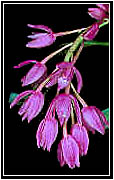 Epidendrum
amethystinum
Epidendrum
amethystinum
|
 Epidendrum
lacustre
Epidendrum
lacustre
|
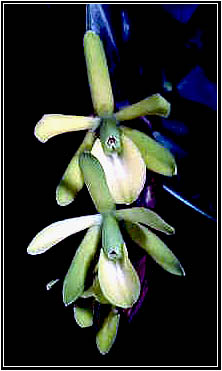 Epidendrum
rafael lucasii
Epidendrum
rafael lucasii |
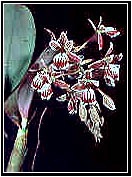 Epidendrum
marmoratum
Epidendrum
marmoratum
|
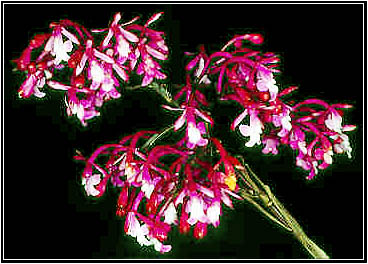
Epidendrum
porphyreum |
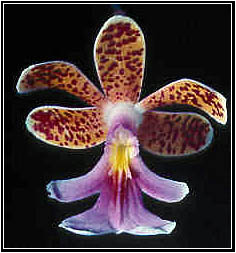
Epidendrum
pseudoschumannianum
|
Photos by Eric Hágsater
|
Any
kind of reproduction (print, digital or anyone other) of any
type of material of this site - texts, layout, photos, images
and others - is strictly forbidden without previous written
permission by the authors.
|

|